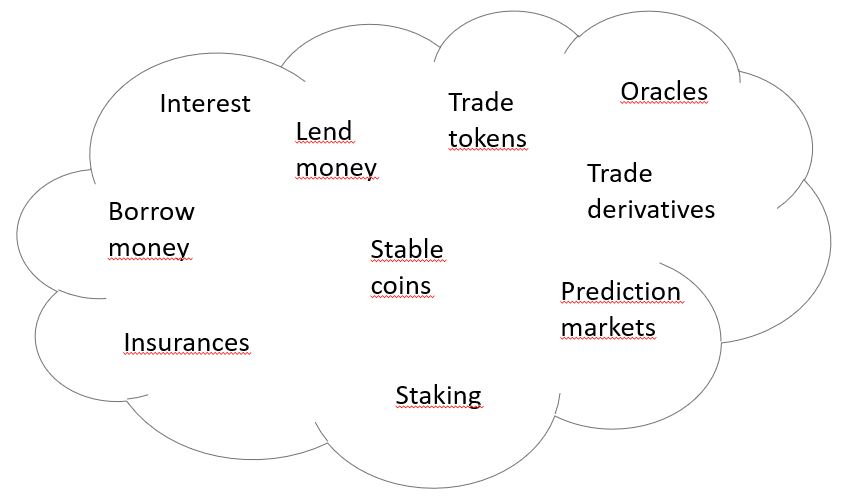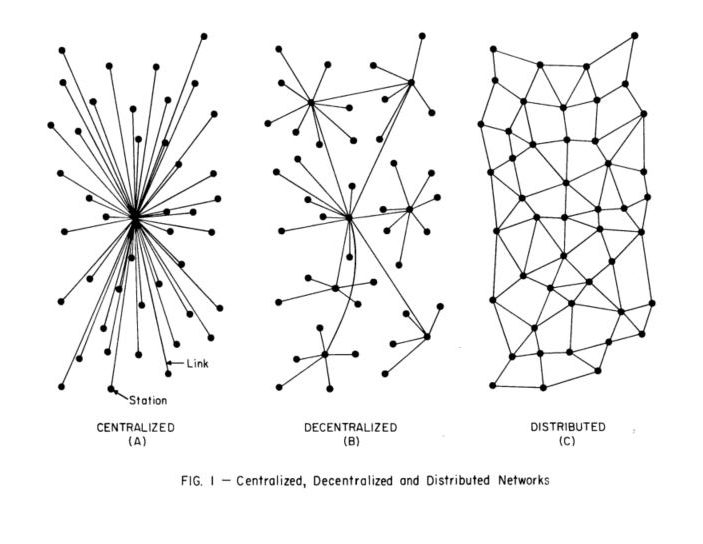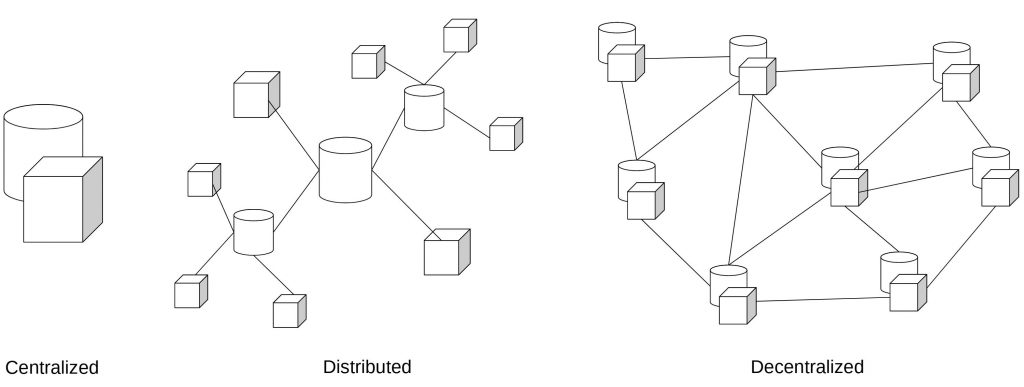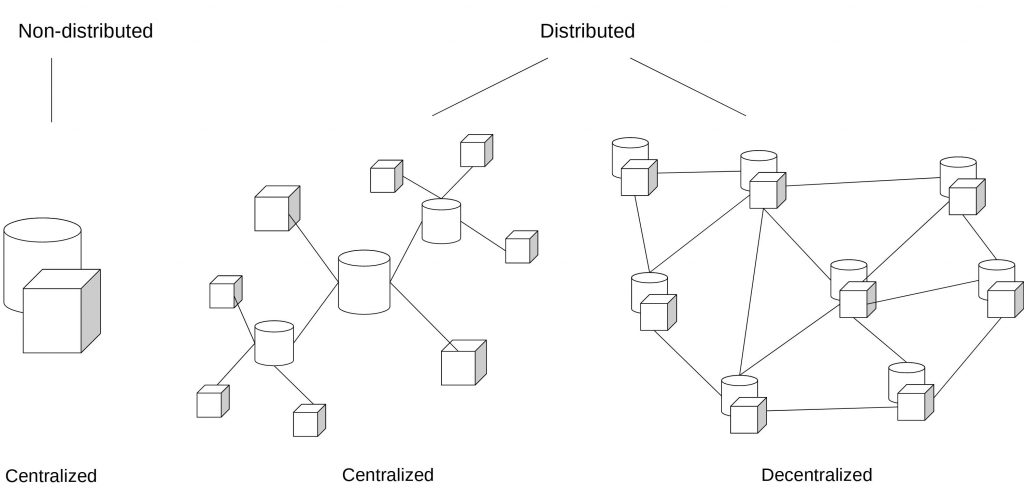How Decentralized is DeFi? – Part 1/3
Last Updated on 6. March 2023 by Martin Schuster
In this blog post series, we will take dig into the question of how decentralized DeFi is. The aim is to create awareness of aspects that influence the decentralization of these services.
Since DeFi is a vast space, we can only set spotlights on certain services and aspects.
In the first part, we will clarify the terms decentralized finance (DeFi) and decentralization. This is necessary because there are different ideas and understandings of these terms.
In the second and third part, we look at the layers of DeFi and scrutinize them regarding their decentralization.
Definitions
First, we will create a common understanding of what we will talk about by looking at some definitions.
Decentralized Finance (DeFi)
When looking for the term DeFi, the “internet” gives us lots of definitions. Let’s go through a few of them and see whether they will take us any further.
1. Short for decentralized finance, DeFi is an umbrella term for peer-to-peer financial services on public blockchains, primarily Ethereum.
[https://www.coinbase.com/learn/crypto-basics/what-is-defi]
2. Decentralized finance (DeFi) offers financial instruments without relying on intermediaries such as brokerages, exchanges, or banks by using smart contracts on a blockchain.
[https://en.wikipedia.org/wiki/Decentralized_finance]
3. Decentralized finance (DeFi) is an emerging financial technology based on secure distributed ledgers similar to those used by cryptocurrencies. The system removes the control banks and institutions have over money, financial products, and financial services.
[https://www.investopedia.com/decentralized-finance-defi-5113835]
4. DeFi is a collective term for financial products and services that are accessible to anyone who can use Ethereum – anyone with an internet connection. With DeFi, the markets are always open and there are no centralized authorities who can block payments or deny you access to anything.
[https://ethereum.org/en/defi/]
All definitions have the following things in common:
- It deals with financial products or services
- It is based on a blockchain. Sometimes it is referred to as peer-to-peer system or distributed ledger.
- There is no central authority or intermediary.
- It is accessible to anyone. This means it is not censored or blocked by a KYC process.
Since this is a bit abstract, here is an overview of some possible DeFi services.

One property that is not mentioned in the definitions above is composability. It is derived from the fact that DeFi services are implemented as smart contracts and typically have no access control (of course, most smart contracts limit the access to certain functions to the “owner” address). This means that every other service can interact with the smart contract like an ordinary user. As a result, it is possible to stack different services together and build another new service on top of it.
Decentralization
The next term we want to understand is decentralization. Again, we first have a look at the definitions.
The website Merriam-webster gives us this:
1: the dispersion or distribution of functions and powers
specifically, government the delegation of power from a central authority to regional and local authorities
2 sociology: the redistribution of population and industry from urban centers to outlying areas
[https://www.merriam-webster.com/dictionary/decentralization]
Wikipedia says:
“Decentralization or decentralisation is the process by which the activities of an organization, particularly those regarding planning and decision making, are distributed or delegated away from a central, authoritative location or group.” [https://en.wikipedia.org/wiki/Decentralization]
And another website tells us:
“Decentralization refers to a specific form of organizational structure where the top management delegates decision-making responsibilities and daily operations to middle and lower subordinates.” [https://www.peoplehum.com/glossary/decentralization]
Unfortunately, this doesn’t help us much. And it gets even more confusing. When looking for the combination of decentralization and network or decentralization and blockchain, we get this illustration:

The centralized network on the left looks like a star. There is clearly a central node in the middle. But the decentralized network clearly shows some signs of central elements. The distributed network, however, seems to have no central node at all.
Taking a look at other sources brings us to the following figure. It has the tags switched between distributed and decentralized systems. The centralized system here is a monolithic node instead of a network.

The idea is taken from https://www.delphitools.info/DWSH/.
To create a common ground, we distinguish between distributed systems and non-distributed (or monolithic) systems. A distributed system can be either centralized or decentralized.

But even this doesn’t help us much. If we think about what the role of the central node is, we find many tasks that it can perform. We can also think about the organizational level of a system. And we can also think of a meta-level where the considered network is part of a larger network or group of networks.
That’s why we consider the following aspects:
Protocol: Does the protocol of the network allow a decentralized operation?
Network architecture: Is the network in deed decentralized? This means, how many nodes are there, and how different are these nodes? Do users use decentralized or rather centralized nodes in this network? Is there a concentration of power among certain nodes?
Governance: Who creates the protocol, and who implements the software or hardware?
Meta level: How is this network embedded in other networks? Is it possible to switch to another network or service if the current network doesn’t satisfy my needs? This extends the view to the aspect of (market) concentration.
Bringing DeFi and Decentralization Together
The challenge is now to bring DeFi and decentralization together. Therefore, we look at the layers of the DeFi stack. The following figure is just a rough depiction of those layers, but it helps us understand their task.
| Aggregation | Aggregators that combine several services |
| Application | User interfaces, Wallets, Market places |
| Protocol | Smart contracts or chain code that runs on Settlement layer 1 or 2 |
| Assets | Token and Coins |
| Settlement Layer 2 | Layer 2 solutions to scale the settlement layer 1 |
| Settlement Layer 1 | The blockchain or DLT itself |
In the next parts, we will scrutinize each layer according to the aspects mentioned above.

 Register
Register Sign in
Sign in